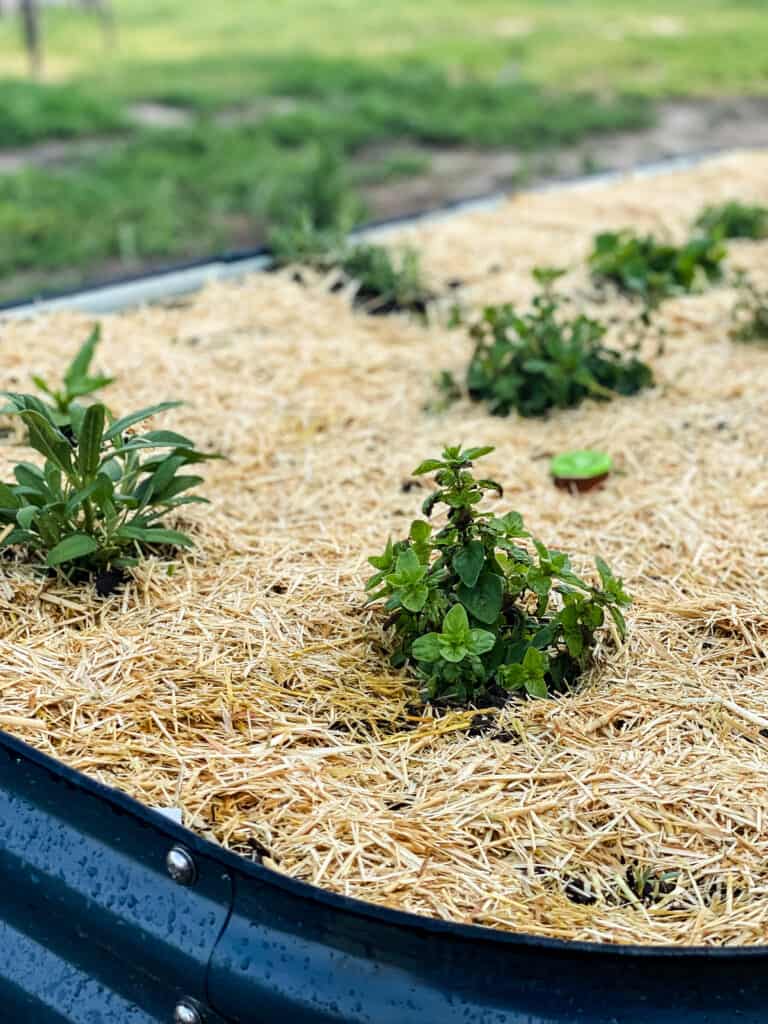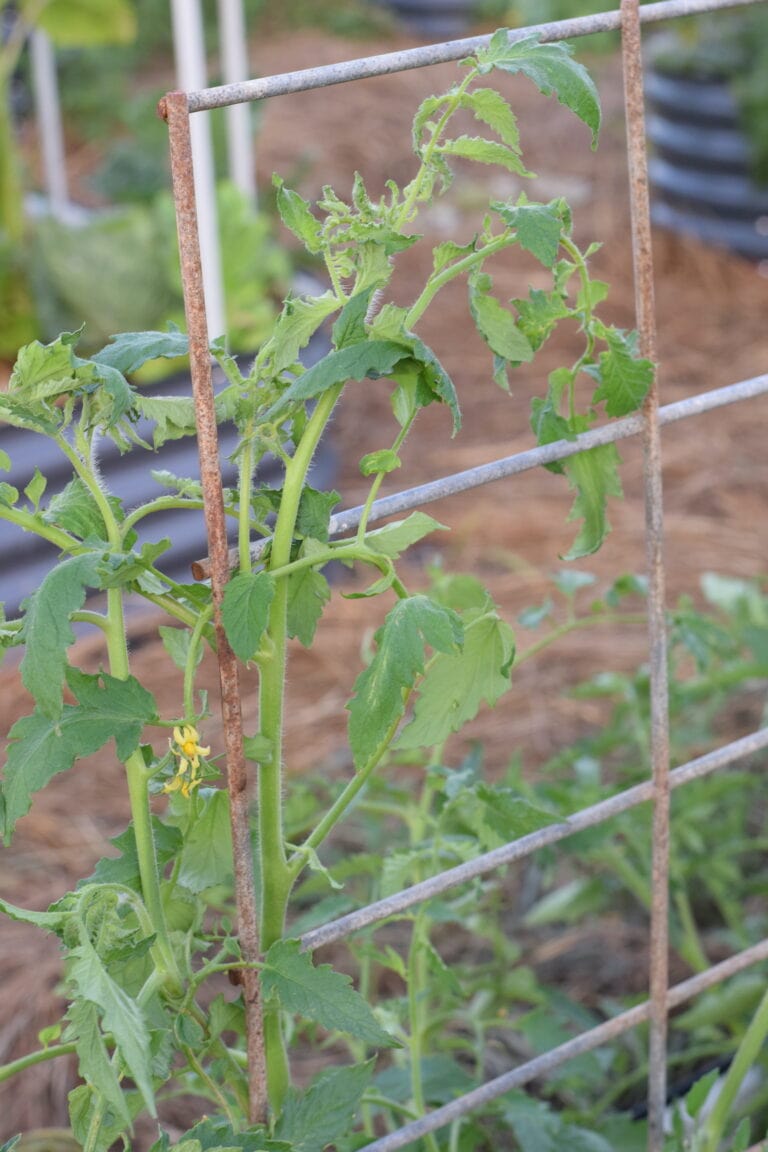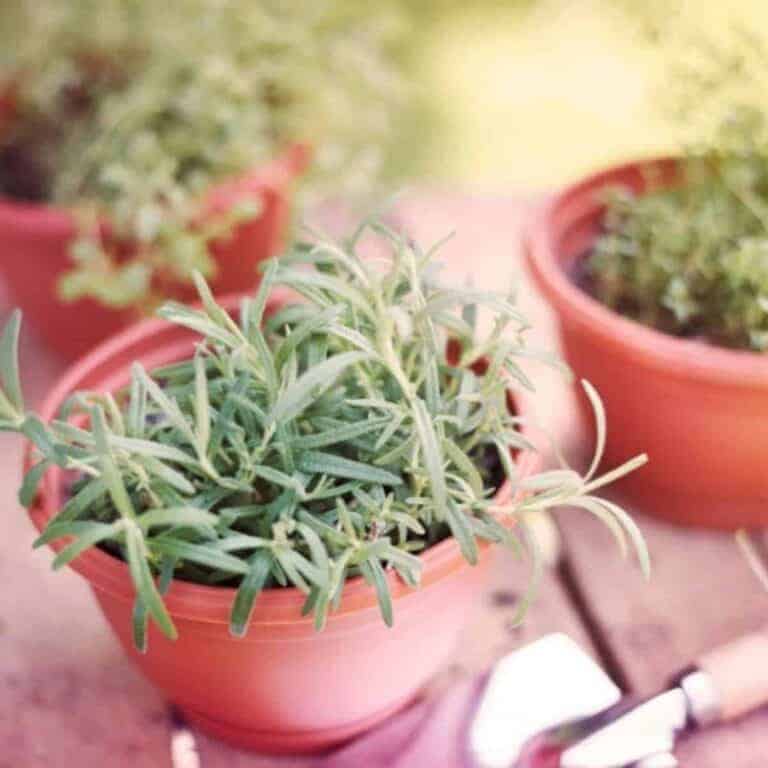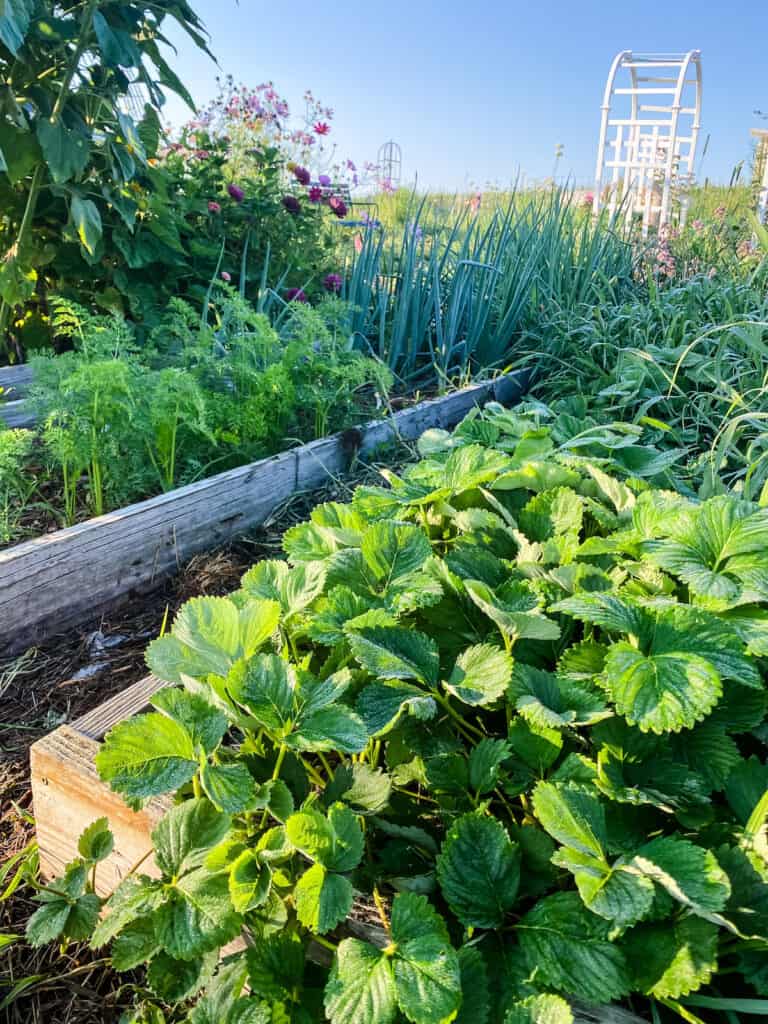Zone 5 Gardening: What to Plant in October
While many of us are starting to slow down and put the garden to rest for the winter, there are still things to do this month. Let’s chat about zone 5 gardening and what to plant in October.
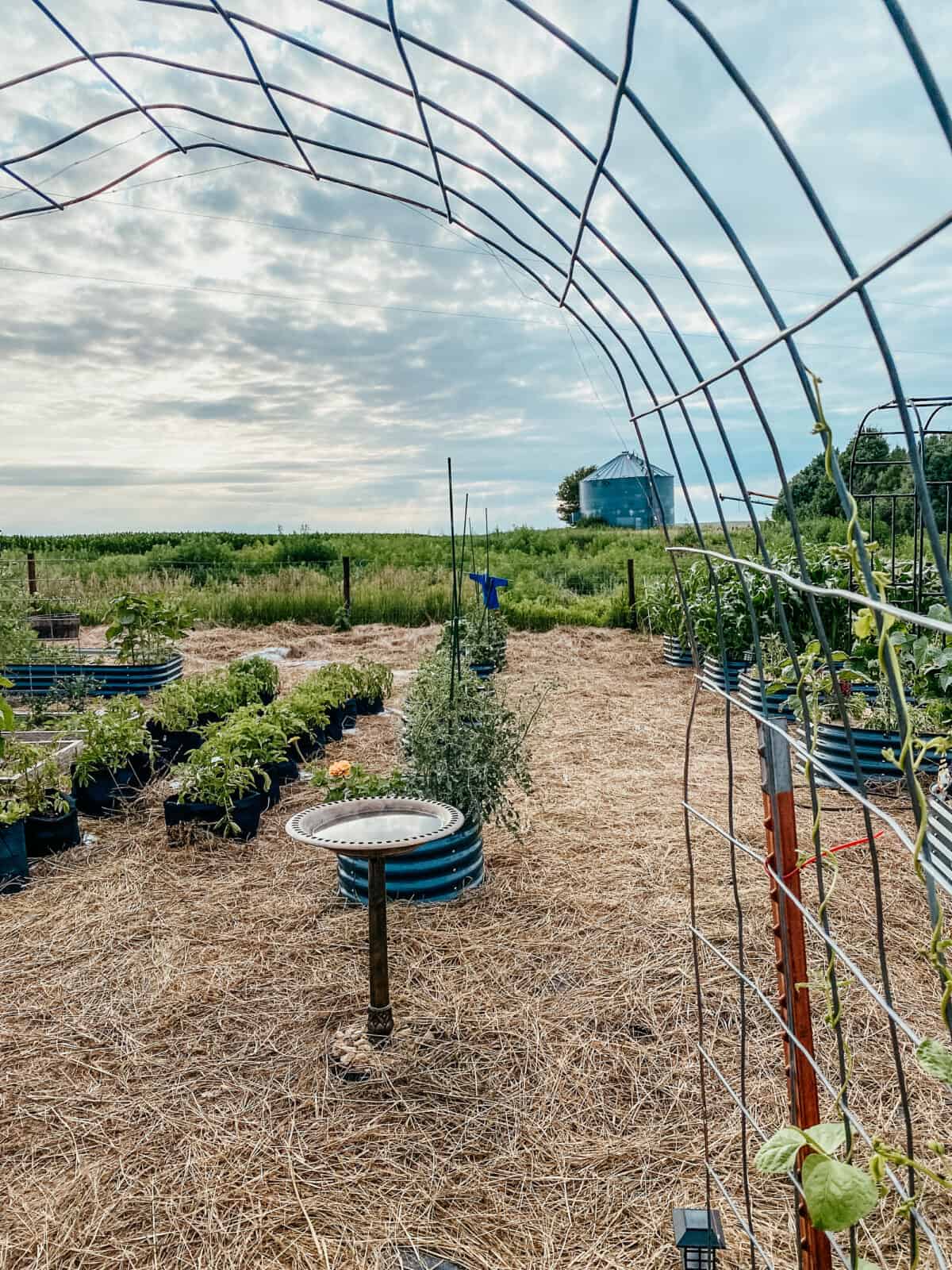
In case you missed the last post in this series, I shared about what to plant in September in zone 5.
October is not just about cleaning up the garden but also about preparing for spring and even getting in some late-season crops. Not only will we all be grateful for these cooler season crops, but also super thankful that we did the work for a spring and summer harvest.
In Zone 5, October can be a time to plant certain cool-weather crops, prepare your garden for winter, and plant crops that will overwinter and be ready for harvest in the spring.
Cool-Weather Gardening
With proper preparation in place, some crops can successfully be grown in cool weather and even some can be overwintered.
To extend the season with cool-weather crops in the zone 5, I would recommend using row covers in raised beds, cold frames, or grow in a greenhouse.

Cold-Hardy Crops
Many vegetables thrive in cooler temperatures and can be overwintered or harvested in early winter. Here’s a list of our recommendations for cool weather tolerant plants.
Spinach – Spinach can germinate in cooler soil temperatures and may overwinter with protection, providing an early spring crop. Sow seeds directly into the garden, 1/2 inch deep, spaced 1-2 inches apart. (giant winter spinach)
Lettuce – Planting lettuce in October can give you harvests in fall and early winter, especially if covered with a cold frame or row cover. Direct sow seeds, or transplant seedlings, spacing 6-12 inches apart. (overwintering salad mix)
→ More on how to lettuce can be found here.
Radishes – Radishes grow quickly and can be harvested before the first hard frost. Sow seeds 1/2 inch deep, spacing them 1 inch apart. (our favorite radishes)

Kale & Collards – These can be planted in October and will tolerate frost, providing harvests into early winter or even spring. Transplant seedlings or direct sow seeds, spacing 12-18 inches apart. (our favorite kale)
Carrots – Carrots can be planted late and left in the ground over winter with mulch to insulate them. Sow seeds about 1/4 inch deep, spaced about 1 inch apart. (our favorite carrots)
→ More on how to grow carrots can be found here.
Planting Bulbs
For zone 5 gardeners, October is the month to plant bulbs for a spring harvest. From beautiful spring flowers like tulips, narcissus, daffodils, crocus, and hyacinths.
This is also when you’ll want to plant garlic bulbs and shallots.
Garlic (hardneck or softneck) – Garlic needs a cold period to form bulbs and is typically planted in fall for a summer harvest. Plant individual cloves about 2 inches deep, root side down, 6 inches apart.
→ Click here for more on growing garlic.
Want to save this?
Shallots and Onions – Like garlic, shallots and some onions can overwinter and be ready for early summer harvest. Plant in well-drained soil, with tips slightly below the surface.

Prepping for Winter
With the arrival of fall, it’s important for gardeners to start preparing for the next growing season. Before the weather gets too cold, its a great time to get a jumpstart on bed preparation for next season.
Some items on the to-do list for winter preparation are garden cleanup and planting cover crops.
Cover crops – Cover crops like clover, winter rye, or vetch protect the soil from erosion, suppress weeds, and add nutrients when turned into the soil in spring. Sow seeds thickly over the garden bed and lightly rake them in. (Wintermax cover crop)
Other considerations for October gardening are to use row covers to extend the growing season and protect crops from frost.
Cold frames are also great for keeping lettuce, spinach, and other greens protected as the weather cools.

Preparing the Garden Beds for Spring
Preparing garden beds in the fall for spring planting is a key step in ensuring a healthy and productive growing season.
Cleanup Beds – Remove old plant debris, weeds, and dead vegetation to prevent pests and diseases from overwintering in the garden. Cut plants at the soil level rather than pulling them out to preserve beneficial soil structure.
Add Organic Matter – Enriching the soil in the fall allows organic matter to break down over the winter, improving soil fertility and structure by spring. Add compost, well-rotted manure, or leaf mold by spreading a 2-4 inch layer over the garden bed.
Mulching – A thick layer of mulch (straw, leaves, wood chips, or compost) protects the soil from temperature fluctuations and erosion and helps retain moisture. Adding mulch (like straw, leaves, or compost) helps protect the soil, retains moisture, and prevents erosion. In the spring, your garden will be ready for planting. Spread 2-6 inches of mulch over the bed after clearing out spent plants.
Soil Testing & Amendments – Fall is the perfect time to test soil pH and nutrient levels, giving you time to amend your soil before spring planting. Send a soil sample to a local extension service or use a DIY soil testing kit. Amendments like lime (to raise pH) or sulfur (to lower pH) can be added now so they have time to work over the winter.
Weed Control – Eliminating weeds in the fall prevents them from setting seeds and spreading, reducing the amount of weeding you’ll need to do in spring. Pull weeds by hand or use a hoe to cut them off at ground level before mulching.

Plan for Spring
Fall is the perfect time to plan next year’s garden layout, crop rotation, and new plantings. I like to take this time to reflect on the previous season and make notes in my garden journal. Fall and winter are perfect for contemplating the next year’s garden plans.
Map out your garden, consider companion planting, and order seeds or plants ahead of time.
I also like to take this time to cleanup pathways and garden structures. This is also time where I lay down cardboard or newspaper over weeds in pathways to help block weeds from popping up in the spring time.
If you like to follow a no-till method of gardening you may want to start with layering the beds now. Lay down cardboard or newspaper over weeds, then add alternating layers of compost, straw, and leaves. This no-dig method builds up layers of organic matter (like cardboard, compost, leaves) that break down over winter, enriching the soil.
These fall preparations will not only help protect and improve your garden beds but also set you up for a thriving garden come spring!


